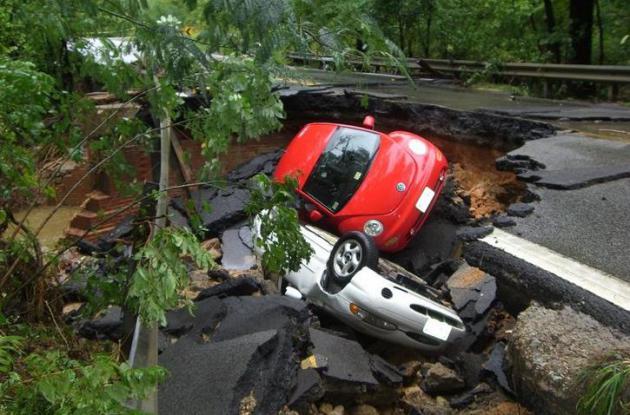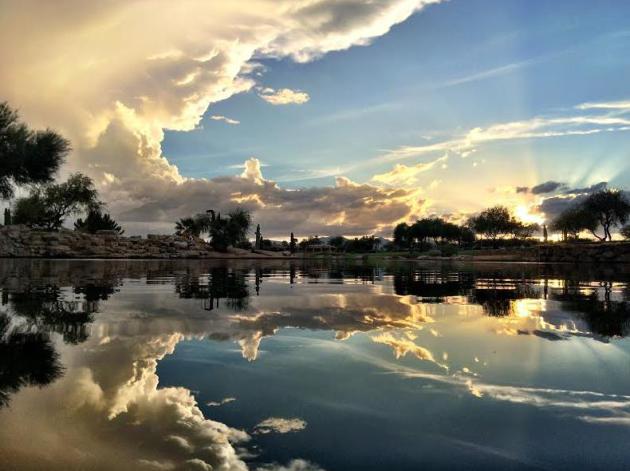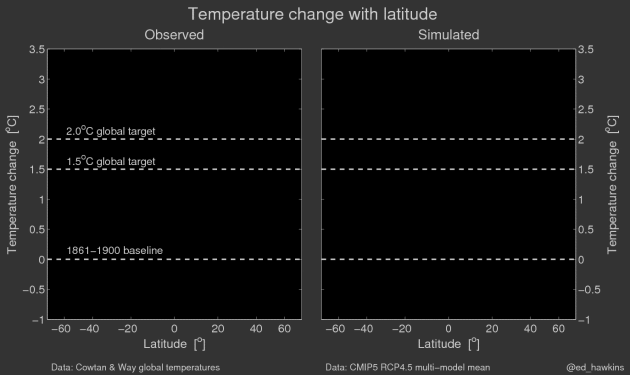77 F. high temperature yesterday in St. Cloud.
68 F. average high on May 12.
56 F. high on May 12, 2016.
May 13, 1872:
A hailstorm hits Sibley County. Hail up to the size of pigeon eggs is
reported. Lightning burns down a barn near Sibley, killing a horse tied
up inside.
Just About Perfect for Minnesota's Fishing Opener
"Fishing is not an escape from life, but often a deeper immersion into it" wrote Harry Middleton. Remember, no fishing and texting today! Soak it up. Be in the moment.
Fishing is the means to and end: disconnecting from the harried, frenetic digital detritus of modern life. If I actually catch fish that's just icing on the cake.
Considering we could be dodging snow flurries - today will be a slice of atmospheric perfection. Plan on 50s this morning with a light breeze from the west. Not much walleye chop out there today. Under a sunny sky the mercury brushes 80F by late afternoon. Looks like the only thing I'm going to catch is a memorable sunburn. Don't forget a six-pack of sunscreen.
Good news for mom: Sunday looks just as nice, with a light southeast breeze and no red blobs on Doppler radar.
This well-timed Kumbaya Weather Weekend gives way to a slow-moving frontal complex next week. 1-3 inches of rain could easily fall between Monday and Friday, before we dry out next weekend.
Hey, I'm trying to time the rain for weekdays and sun on the weekends. Then everyone's happy!


Northeast Soaking. Another miserable weekend is shaping up from the Mid Atlantic into New England as a storm intensifies off Long Island, whipping up strong winds and coastal beach erosion as it temporarily stalls off Cape Cod. Dry weather graces much of the nation's midsection with more rain for the Pacific Northwest. What a shock. 84-hour NAM guidance: NOAA and Tropicaltidbits.com.
Map credit: Aeris AMP.

Image credit: Ken Burns and PBS.
On This Date in 1934: Massive Dust Storms Sweeps from Midwest Into Eastern USA. History.com has a good overview: "On this day in 1934, a massive storm sends millions of tons of topsoil flying from across the parched Great Plains region of the United States as far east as New York, Boston and Atlanta. At the time the Great Plains were settled in the mid-1800s, the land was covered by prairie grass, which held moisture in the earth and kept most of the soil from blowing away even during dry spells. By the early 20th century, however, farmers had plowed under much of the grass to create fields. The U.S. entry into World War I in 1917 caused a great need for wheat, and farms began to push their fields to the limit, plowing under more and more grassland with the newly invented tractor. The plowing continued after the war, when the introduction of even more powerful gasoline tractors sped up the process. During the 1920s, wheat production increased by 300 percent, causing a glut in the market by 1931..." (Image: History.com).
An Overview of the Modern Tornado Record, 1950 Through Present. U.S. Tornadoes has an excellent overview of tornado technology, frequency and trends over time: "...In the 1950s there was a practical use of numerical weather prediction and development of computers. Forecasts were done by hand, on printed weather maps. By the 1960s, numerical weather prediction by computer began. The first successful weather satellite was launched, TIROS-7. On a 78-day mission, it relayed thousands of images showing large-scale cloud regimes, thus proving that satellites can provide useful information and surveillance of global weather from space. This satellite paved the way for the Nimbus Program, a NASA and NOAA collaboration for decades that advanced further research and use of satellite programs. During the first 20 years of the database, tornado reports steadily grew as awareness grew. The Palm Sunday outbreak in 1965 has been attributed to some of the growth in awareness. Forty-seven tornadoes occurred on April 11th and 12th in Indiana, Michigan, Ohio, Wisconsin, Iowa and Illinois. They killed 271. In many ways, it was a generational tornado outbreak like 2011 despite its lower death toll. History is replete with big tornado events that bring discussion of their destructive force out of hiding..."
Graphic credit: "Tornadoes by year." (Ian Livingston/ustornadoes.com)
Despite Warnings, Drivers Continue to Die on Flooded Roads. And most of those fatalities occur in vehicles, according to U.S. News: "...Data compiled by Shea shows that 595 Americans have died in floodwater since 2011. A few fell into rivers or drowned while fishing on flooded waterways. And some children died playing too close to high water. But 61 percent of victims died in vehicles, often after driving around barriers or ignoring signs warning them to turn back. Texas, with its vast rural areas and many waterways, has had more flood-related deaths than any other state since 2011. Nim Kidd, chief of the Texas Division of Emergency Management, said too many people underestimate the power of water and "think emergencies and disasters happen to somebody else..."
File photo: AP.
Thousand-Year Flood for Missouri? Here's an excerpt of an analysis at Climate Signals: "A major slow-moving storm brought heavy rains, dangerous winds, tornadoes, and flooding across much of the central US beginning April 28. States from Oklahoma to Indiana recorded extreme three-day rainfall totals of 5 to 11 inches.[1] Eastern Texas saw two EF-3 tornadoes and Kansas experienced a rare late-season blizzard. An impressively large area of 100- to 1,000-year rains hammered Missouri[2][4] and the Ozarks were hit by record-shattering flood crests. At least 20 people have been killed.[3] Climate change is amplifying rainfall across all storm types. One of the clearest changes in the weather across the globe and in the US is the increasing frequency and intensity of heavy rain and snow. A warmer atmosphere holds more water, and storms supplied by climate change with increasing moisture are widely observed to produce heavier rain and snow..."

File photo: Virginia Department of Transportation.
As Heat Index Climbs, Emergency Visits, Deaths Rise in New England. It turns out the Heat Index (temperature + dew point) doesn't have to be as high as thought for people to succumb to the heat. Here's an excerpt from Brown University: "New research shows that New Englanders are susceptible to serious health effects even when the heat index is below 100, a finding that has helped to change the National Weather Service threshold for heat warnings...Data from the study, published in Environmental Research, has helped to shape a new National Weather Service policy for the New England region, according to a recently posted statement from the service’s eastern region headquarters. “The old threshold of 100 to 104 degrees Farenheit for two or more consecutive hours has been lowered to 95 to 99 degrees Farenheit occurring for two or more consecutive days, or any duration of heat index 100 to 104 degrees Farenheit,” the statement says..."
File photo: Star Tribune.
Tesla's Solar Roof Pricing is Cheap Enough to Catch Fire. Bloomberg has a good overview of the technology: "...The vision Musk describes with the solar roof is the grand unification of Tesla’s clean-energy ambitions, combining solar power, batteries, and electric cars. “These are really the three legs of the stool for a sustainable energy future,” Musk said. “Solar power going to a stationary battery pack so you have power at night, and then charging an electric vehicle … you can scale that to all the world’s demand.” The rooftop shingles are virtually indistinguishable from traditional high-end roofing products, with discreet solar cells embedded beneath a glass surface. From most viewing angles, they look just like ordinary shingles, but they allow light to pass through from above onto a standard flat solar cell..." (photo credit: Tesla).
Image credit: "Rendering of Yara's self-driving ship." (Yara)

Graphic above: Ariel Costa for Quartz.
- Paying: A subscription is an ongoing commitment to the production of content, not a one-off payment for one piece of content that catches the eye.
- Regular Delivery: A subscriber does not need to depend on the random discovery of content; said content can be delivered to to the subscriber directly, whether that be email, a bookmark, or an app.
- Well-defined Value: A subscriber needs to know what they are paying for, and it needs to be worth it.
Minneapolis Named Best Place for Doctors to Avoid Burnout. Who knew? Details via Minneapolis - St. Paul Business Journal: "The
weather in Minneapolis is often cold, but when it comes to avoiding
doctor burnout, it's No. 1. According to Medscape, a medical trade
publication, Minneapolis ranks as the best place for physician
satisfaction when it comes to a calm life coupled with professional and
personal satisfaction. Factors used in the study include: the number of
medical malpractice lawsuits, least punitive medical boards, teamwork
with physician assistants and nurse practitioners, local amenities and
overall quality of life..."
File image: US Chamber of Commerce Foundation.
For the Weather Nerd In Your Life. The folks at Helicity Designs
have done a really good job with this site. This is the first time I've
ever seen Doppler radar tennis shoes. Great selection of T-shirts and
apparel as well. I hope they do well (I have my order in).
TODAY: Warm sun. Wow factor. Winds: W 5-10. High: 81
SATURDAY NIGHT: Clear and pleasant. Low: 57
SUNDAY: Mother's Day sunscreen. Breezy with blue sky. Winds: SE 8-13. High: 81
MONDAY: Sticky sun, PM T-storms. Winds: SE 8-13. Wake-up: 61. High: 80
TUESDAY: T-storms. Locally heavy rain. Winds: S 10-20. Wake-up: 63. High: 83
WEDNESDAY: Peeks of sun, a bit drier. Winds: NW 7-12. Wake-up: 62. High: 79
THURSDAY: Muggy, another round of T-storms. Winds: SE 10-15. Wake-up: 59. High: 78
FRIDAY: T-storms, more heavy rain possible. Winds: S 10-20. Wake-up: 63. High: 77
Climate Stories...
Photo credit: "US secretary of state Rex Tillerson at the Arctic Council meeting in Fairbanks, Alaska." (Pic: Arctic Council Secretariat/Linnea Nordström).

* thanks to AerisWeather modeling genius Patrick Francis for passing this post along.
Intelligence Community to Trump: When it Comes to Global Warming, You're Wrong. Here's an excerpt of a story at Mashable: "Each year the intelligence community puts together a "Worldwide Threat Assessment" report, and it inevitably scares the hell out of Congress and the public by detailing all the dangers facing the U.S. (Hint: there are a lot of them.) This year's report, published Thursday and discussed at a congressional hearing, makes for a particularly disquieting reading. While it focuses on the increasing danger that North Korea's nuclear weapons program poses as well as cyberterrorism threats, one environmental concern stands out on the list: climate change. According to the new report, delivered to the Senate Intelligence Committee by Dan Coats, the direction of national intelligence (DNI), warns that climate change is raising the likelihood of instability and conflict around the world..."
Photo credit: "Norfolk Naval Base, the largest in the world, is experiencing flooding from sea level rise." Image: U.S. Navy/Shutterstock.
Climate Change is Unraveling Natural Cycles in the West. High Country News reports: "...This follows a growing trend. According to the 2014 National Climate Assessment, from 1950 to 2005, spring shifted about eight days earlier in the Western United States, due to climate change. “This trend matters because of what it means for a lot of ecosystem processes and interactions between organisms,” says Kathy Gerst, research scientist with the USA-NPN. “Plants may flower earlier, but other organisms may respond to different cues, or to the same cues in different ways...”
Map credit: USA-National Phenology Network and the U.S. Geological Survey. Illustration by Brooke Warren/High Country News.
* The 32 page 2017 Worldwide Threat Assessment is here.
Disappearing Montana Glaciers a "Bellwether" of Melting to Come? NPR reports: "The glaciers in Montana's Glacier National Park are rapidly disappearing. Some have been reduced by as much as 85 percent over the past 50 years, while the average loss is 39 percent, according to a new study from the U.S. Geological Survey and Portland State University. The researchers looked at historic trends for 39 glaciers, 37 of which are found in the park. The other two are on U.S. Forest Service land. The stark data actually calls into question whether all of these formations are still glaciers. In fact, the scientists found that only 26 of them are still larger than 25 acres — a common benchmark for determining whether a mass of ice is classified as a glacier..."
Image credit: "Boulder Glacier in 1932 (left) and in 2005." T.J. Hileman/Glacier; NPGreg Pederson/USGS.
Map credit: "The perimeter of Sperry Glacier in Glacier national park in 1966,1998, 2005, and 2015." Photograph: US Geological Survey.
Photo credit: "Glacier National Park is losing its glaciers as global temperatures rise. When the park was founded in 1910, it had about 150 glaciers. Today, only 26 still meet the 25-acre threshold to be called a glacier." Credit: Jinrui Qu/CC-BY-SA-2.0.
Climate Change is Turning the American Southwest into "Mad Max". Esquire digs into the data and the trends: "...According to the study, the number of dust storms that the American southwest experiences each year has more than doubled from the 1990s to the 2000s. These storms—which can spread infectious disease, damage airplane engines, disrupt land transportation, wreak further havoc on drought-ravaged farms, and serve as a key component of the Mad Max lifestyle—are likely more frequent because of warmer ocean temperatures in the Pacific Ocean. That, according to the EPA (last year), is one of many splendid results of climate change. Dust storms now strike the Southwest 48 times a year, compared to an average of 20 times per year during the 1990s. Researchers traced the spike to a combination of warmer sea temperatures in the North Pacific and colder waters off the California coast, which allows the cooler, drier winds from the North Pacific to come sweeping into the southwestern United States. That has dried out the soil, and kicked up more dust storms..."
Photo credit: Joseph Plotz/NWS/NOAA). "A July 2012 dust storm in Gilbert, Arizona."

Arctic Heating Up Twice as Fast as Rest of the Globe. CNN reports: "The Arctic is heating up twice as fast as the rest of the world -- triggering a "massive decline in sea ice and snow," according to a new federal report. On Tuesday, the National Oceanic and Atmospheric Administration released its 11th annual Arctic Report Card, which compiles data from 61 scientists in 11 countries. "Rarely have we seen the Arctic show a clearer, stronger or more pronounced signal of persistent warming and its cascading effects on the environment than this year," Jeremy Mathis, director of NOAA's Arctic Research Program, said in a statement..."
Animation credit: Arctic ice melt from 1984 to 2016. Courtesy of NASA.
New Book Ranks the Top 100 Solutions to Climate Change. The Results Are Surprising. You'll never guess what's number 1. Here's an excerpt of an interview with Dave Roberts at Vox: "...We
thought at least the top of the list would — solar, wind, wind, solar.
Because that’s what you hear from Charles Ferguson, Al Gore, [Jeffrey]
Sachs, or Christiana Figueres. They’re all saying the same thing. It’s
understandable — 62 percent of the [greenhouse gas] molecules up there
came from fossil fuel combustion, so you just invert it, right? It makes
sense. It just doesn’t work out that way. If you take solar, which is
eight and 10 [on the list], and wind, which is two and 22, and you
combine them, they are definitely near the top. But you can’t model on-
and off-shore wind the same, because the economics are vastly different.
And you can’t model rooftop and solar farms in the same model. So in
some cases we broke things up that people think of as aggregated. But
even then, the number one solution is educating girls and family
planning..."
No comments:
Post a Comment